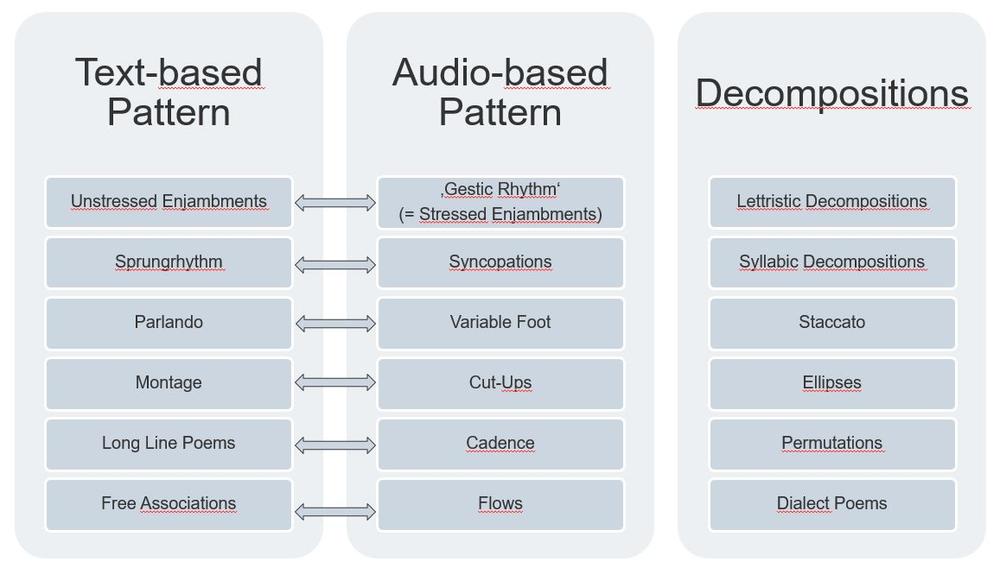In his groundbreaking study on "The Prosodies of Free Verse" from 1971, Donald Wesling distinguished five different prosodic types in the history of free verse prosody:
- Whitmanic, referring to Whitman's adaptation of "the biblical verset and syntax" in "end-stopped lines .., .with boundaries so often equivalent to those of larger units of grammar," which Wesling sees as "constitut[ing] the precomposition or matrix of free verse in English" (166-67);
- "line-sentences," as developed by Pound in Cathay on the basis of Ernest Fenollosa's theories of the sentence derived from study of Chinese;
- dismemberment of the line, whereby the line becomes "ground to the figures of its smaller units" (181), and, as a sub-category, spatial dismemberment of the line by indentation, as by Williams in his triadic line verse;
- systematic enjambment, whereby "[t]he lines.., .are figures on the ground of the larger unit, the stanza" (181);
- dismemberment together with enjambment of the line, such that "the middle units on the rank scale engage in a protean series of identity shifts as between figure and ground." (181)
Based on this typology extended by Wesling in later works, we distinguish 18 rhythmic patterns based on the following three pattern types:


